 W
WThe Crucifixion of Jesus occurred in 1st-century Judea, most likely between AD 34 and ad 35. Jesus' crucifixion is described in the four canonical gospels, referred to in the New Testament epistles, attested to by other ancient sources, and is established as a historical event confirmed by non-Christian sources, although there is no consensus among historians on the exact details.
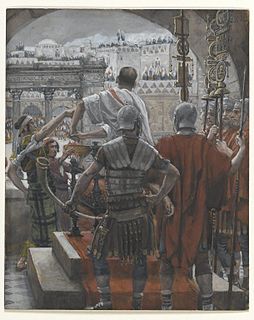 W
WThe blood curse refers to a New Testament passage from the Gospel of Matthew, which describes events taking place in Pilate's court before the crucifixion of Jesus and specifically the apparent willingness of the Jews to accept liability for Jesus' death.
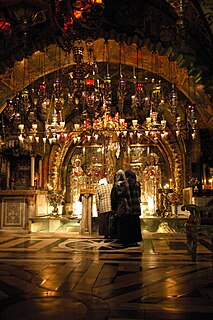 W
WCalvary, or Golgotha, was, according to the canonical Gospels, a site immediately outside Jerusalem's walls where Jesus was crucified.
 W
WChrist Carrying the Cross on his way to his crucifixion is an episode included in all four Gospels, and a very common subject in art, especially in the fourteen Stations of the Cross, sets of which are now found in almost all Catholic churches. However, the subject occurs in many other contexts, including single works and cycles of the Life of Christ or the Passion of Christ. Alternative names include the Procession to Calvary, Road to Calvary and Way to Calvary, Calvary or Golgotha being the site of the crucifixion outside Jerusalem. The actual route taken is defined by tradition as the Via Dolorosa in Jerusalem, although the specific path of this route has varied over the centuries and continues to be the subject of debate.
 W
WThe crucifixion darkness is an episode in three of the canonical gospels in which the sky becomes dark in daytime during the crucifixion of Jesus.
 W
WThe Descent from the Cross, or Deposition of Christ, is the scene, as depicted in art, from the Gospels' accounts of Joseph of Arimathea and Nicodemus taking Christ down from the cross after his crucifixion. In Byzantine art the topic became popular in the 9th century, and in the West from the 10th century. The Descent from the Cross is the 13th Station of the Cross.
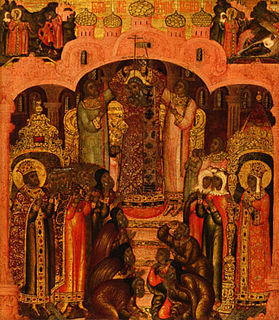 W
WIn the Christian liturgical calendar, there are several different Feasts of the Cross, all of which commemorate the cross used in the crucifixion of Jesus. Unlike Good Friday, which is dedicated to the passion of Christ and the crucifixion, these feast days celebrate the cross itself, as the sign of salvation. In Roman Catholicism, Eastern Orthodoxy, and Anglicanism the most common day of commemoration is September 14.
 W
WIn Christian tradition, the Five Holy Wounds, also known as the Five Sacred Wounds or the Five Precious Wounds, are the five piercing wounds Jesus Christ suffered during the crucifixion. The wounds have been the focus of particular devotions, especially in the late Middle Ages, and have often been reflected in church music and art.
 W
WThe Flagellation of Christ, sometimes known as Christ at the Column or the Scourging at the Pillar, is a scene from the Passion of Christ very frequently shown in Christian art, in cycles of the Passion or the larger subject of the Life of Christ. It is the fourth station of the modern alternate Stations of the Cross, and a Sorrowful Mystery of the Rosary. The column to which Christ is normally tied, and the rope, scourge, whip or birch are elements in the Arma Christi. The Basilica di Santa Prassede in Rome claims to possess the original column.
 W
WGood Friday is a Christian holiday commemorating the crucifixion of Jesus and his death at Calvary. It is observed during Holy Week as part of the Paschal Triduum on the Friday preceding Easter Sunday, and may coincide with the Jewish observance of Passover. It is also known as Holy Friday and Great Friday,.
 W
WThe instrument of Jesus' crucifixion is generally taken to have been composed of an upright wooden beam to which was added a transom, thus forming a "cruciform" or T-shaped structure.
 W
WThere are several references in the Synoptic Gospels to Jesus predicting his own death, the first two occasions building up to the final prediction of his crucifixion. Matthew's Gospel adds a prediction, before he and his disciples enter Jerusalem, that he will be crucified there.
 W
WIn the New Testament, Jesus is referred to as the King of the Jews, both at the beginning of his life and at the end. In the Koine Greek of the New Testament, e.g., in John 19:3, this is written as Basileus ton Ioudaion.
 W
WKilling Jesus: A History is a 2013 book by Bill O'Reilly and Martin Dugard about the life and crucifixion of Jesus, referred to in the book as Jesus of Nazareth. It is the follow-up to Killing Kennedy and Killing Lincoln. Killing Jesus was released September 24, 2013 through Henry Holt and Company.
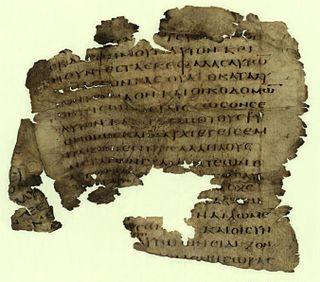 W
WMark 15 is the fifteenth chapter of the Gospel of Mark in the New Testament of the Christian Bible. This chapter records the narrative of Jesus' passion, including his trial before Pontius Pilate and then his crucifixion, death and entombment.
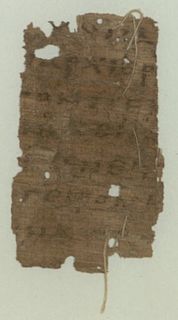 W
WMatthew 27 is the 27th chapter in the Gospel of Matthew, part of the New Testament in the Christian Bible. This chapter contains Matthew's record of the day of the trial, crucifixion and burial of Jesus. Scottish theologian William Robertson Nicoll notes that "the record of this single day is very nearly one-ninth of the whole book".
 W
WIn the canonical gospels, Pilate's court refers to the trial of Jesus in praetorium before Pontius Pilate, preceded by the Sanhedrin Trial. In the Gospel of Luke, Pilate finds that Jesus, being from Galilee, belonged to Herod Antipas' jurisdiction, and so he decides to send Jesus to Herod. After questioning Jesus and receiving very few replies, Herod sees Jesus as no threat and returns him to Pilate. Fearing defilement, the Jews did not enter the court, and Pilate's discussion with them occurred outside the praetorium.
 W
WQuod scripsi, scripsi is a Latin phrase. It was most famously used by Pontius Pilate in the Bible in response to the Jewish priests who objected to his writing on the sign (titulus) that was hung above Jesus at his Crucifixion. It is mostly found in the Latin Vulgate Bible. It is equivalent to the Latin expression Dixi, meaning that the speaker has spoken and there is no more to be said.
 W
WThe Raising of the Cross is part of the Crucifixion of Jesus, and has been a distinct subject of Christian art.
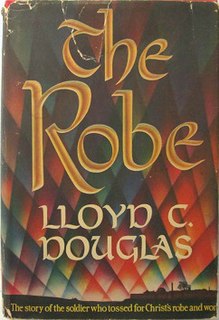 W
WThe Robe is a 1942 historical novel about the Crucifixion of Jesus, written by Lloyd C. Douglas. The book was one of the best-selling titles of the 1940s. It entered the New York Times Best Seller list in October 1942, four weeks later rose to No. 1, and held the position for nearly a year. The Robe remained on the list for another two years, returning several other times over the next several years including when the film adaptation was released in 1953.
 W
WThe Sayings of Jesus on the cross are seven expressions biblically attributed to Jesus during his crucifixion. Traditionally, the brief sayings have been called "words". They are gathered from the four Canonical Gospels. Three of the sayings appear only in the Gospel of Luke and two only in the Gospel of John. One other saying appears both in the Gospel of Matthew and the Gospel of Mark, and another is only directly quoted in John but alluded to in Matthew and Mark. In Matthew and Mark, Jesus cries out to God. In Luke, he forgives his killers, reassures the penitent thief, and commends his spirit to the Father. In John, he speaks to his mother, says he thirsts, and declares the end of his earthly life.
 W
WStigmata, in Christianity, are the appearance of bodily wounds, scars and pain in locations corresponding to the crucifixion wounds of Jesus Christ, such as the hands, wrists and feet. An individual bearing the wounds of stigmata is a stigmatist or a stigmatic.
 W
WThe Three Hours' Agony is a Christian service held in some Roman Catholic, Lutheran, Anglican and Methodist churches on Good Friday from noon till 3 o'clock to commemorate the three hours of Christ's hanging at the cross.
 W
WThe True Cross is the name for physical remnants which, by the tradition of some Christian churches, are said to be from the cross upon which Jesus was crucified.
 W
WVia Crucis, S.53, is a work for mixed choir, soloists and organ by Franz Liszt. The work is devoted to the Stations of the Cross. It is one of the last works of Liszt.
 W
WThe Via Dolorosa is a processional route in the Old City of Jerusalem, Israel, believed to be the path that Jesus walked on the way to his crucifixion. The winding route from the former Antonia Fortress to the Church of the Holy Sepulchre — a distance of about 600 metres — is a celebrated place of Christian pilgrimage. The current route has been established since the 18th century, replacing various earlier versions. It is today marked by nine Stations of the Cross; there have been fourteen stations since the late 15th century, with the remaining five stations being inside the Church of the Holy Sepulchre.